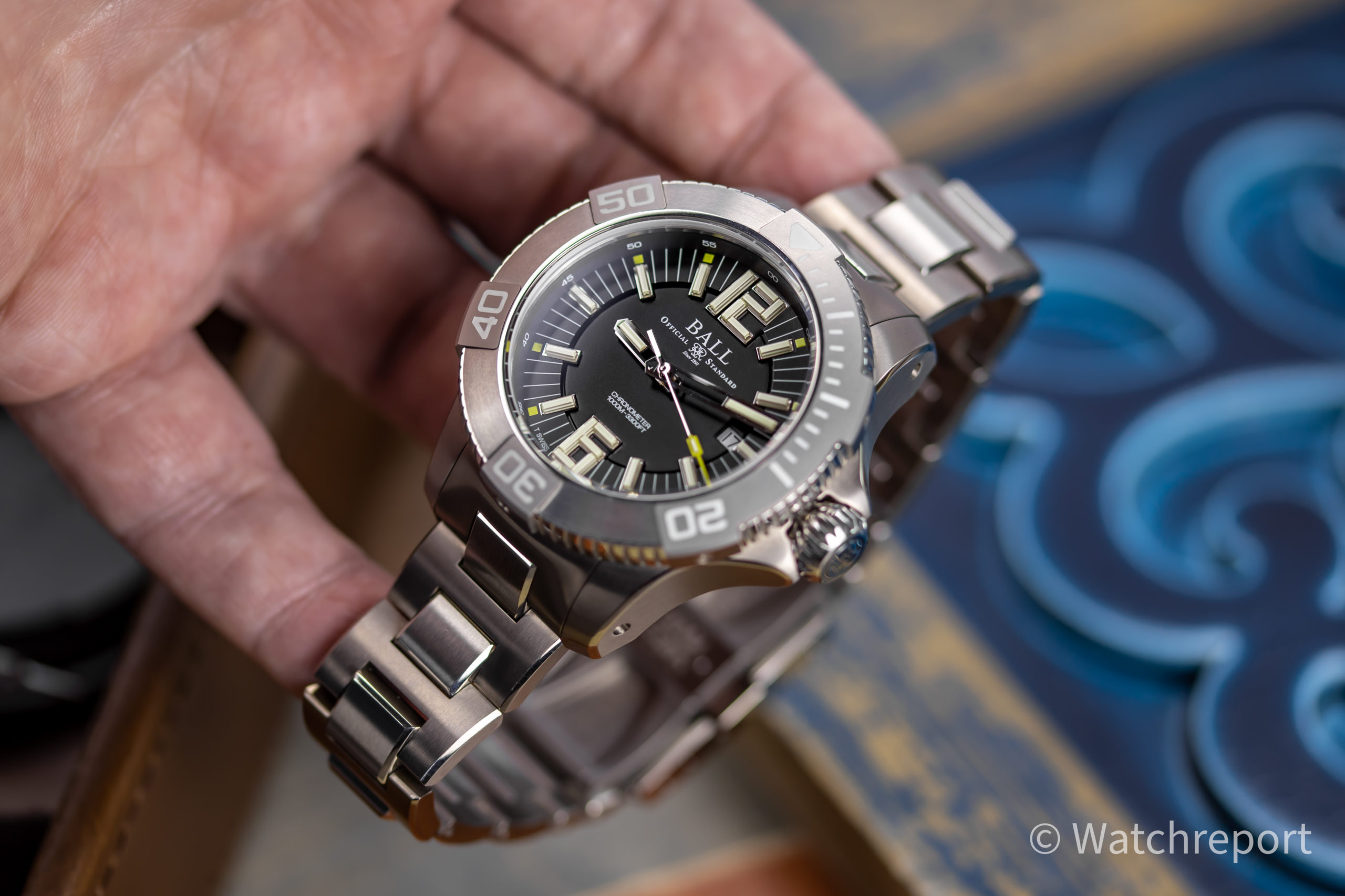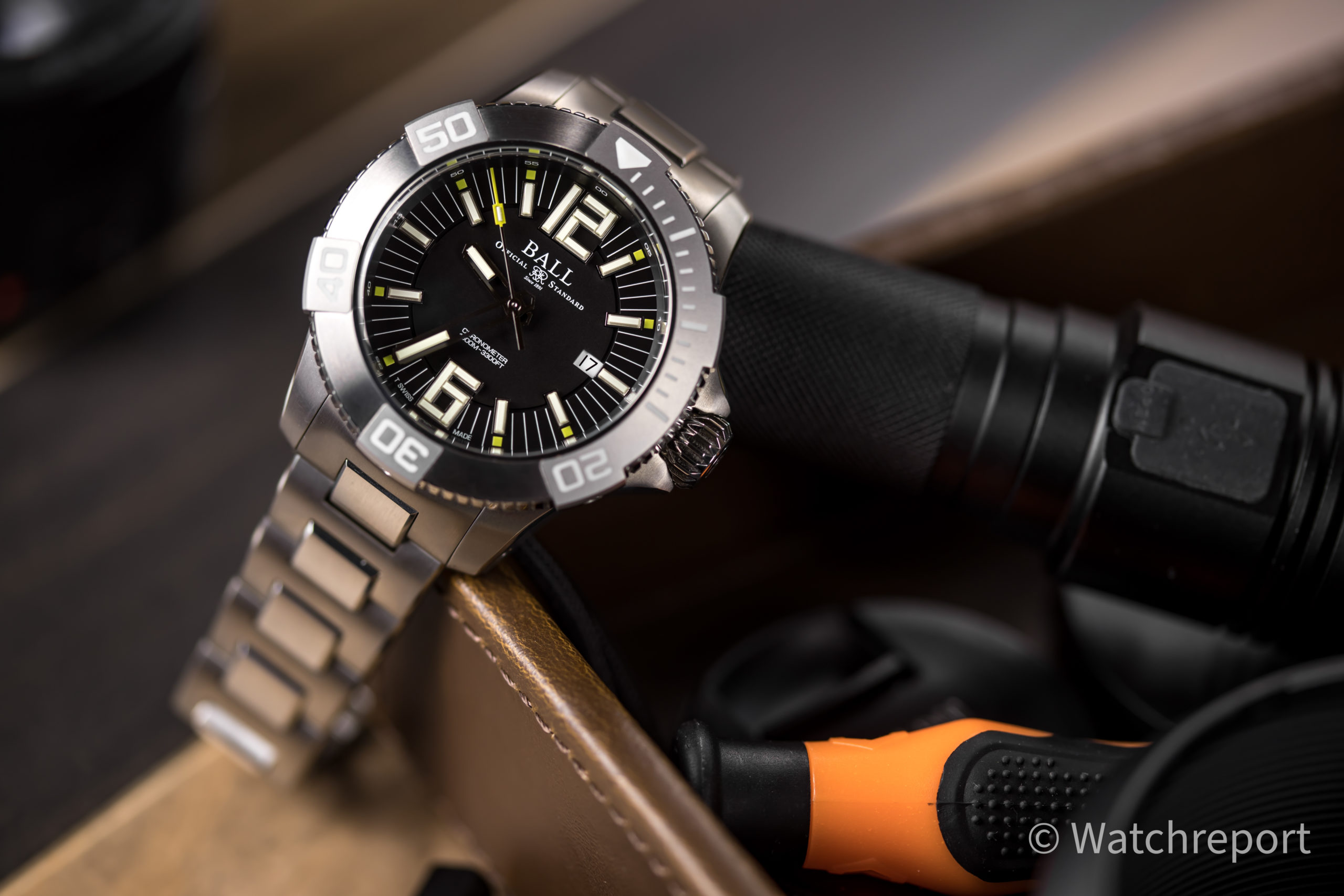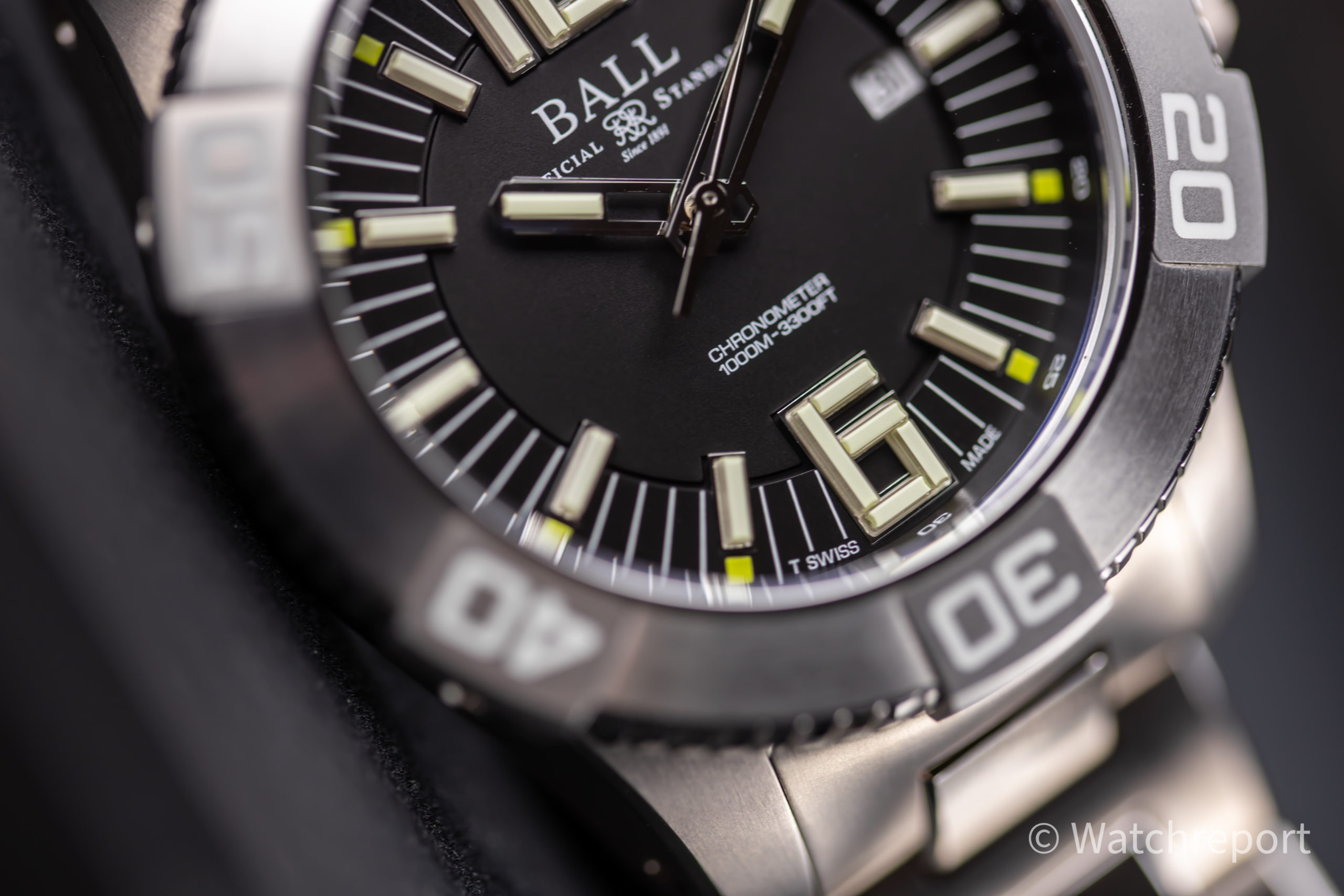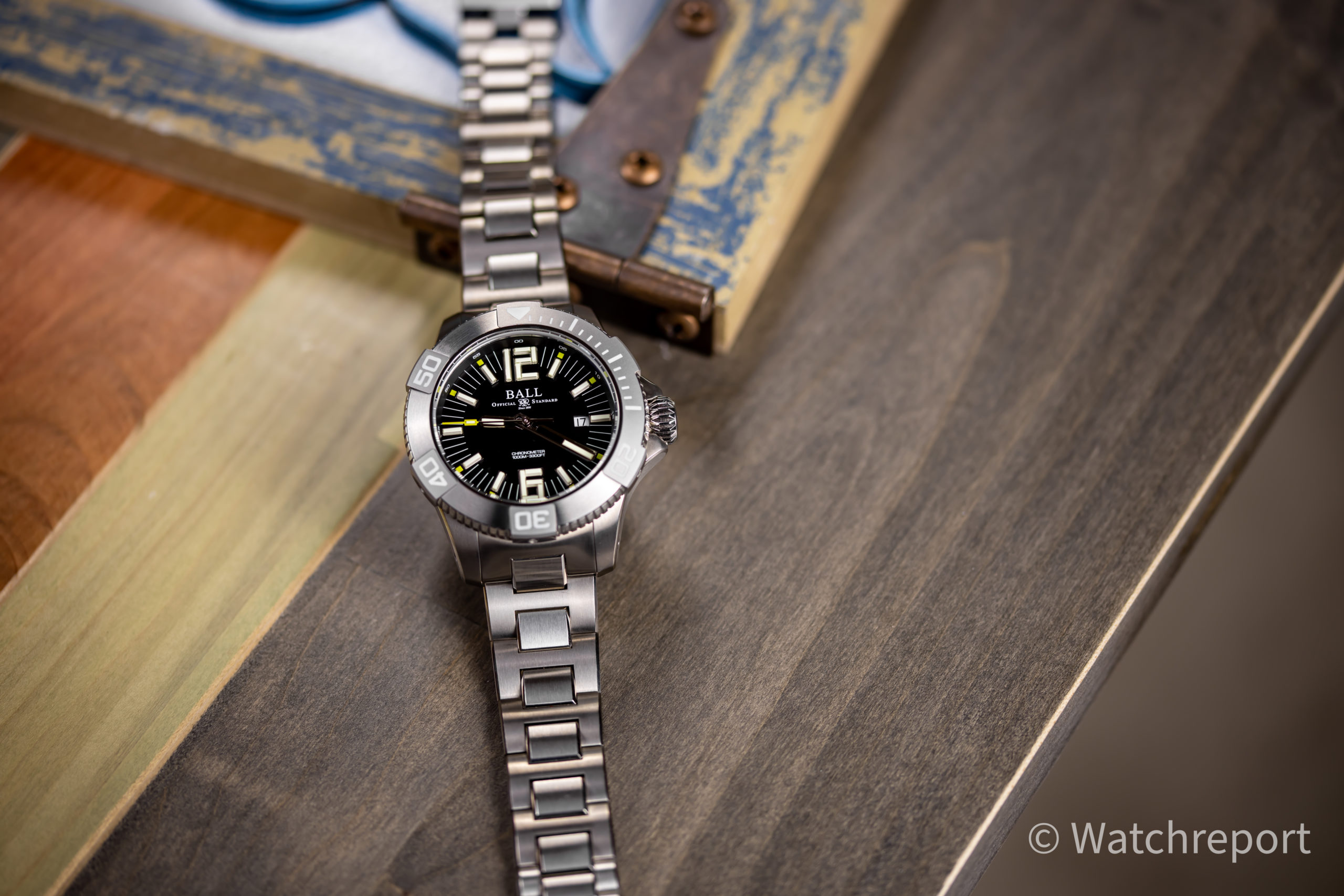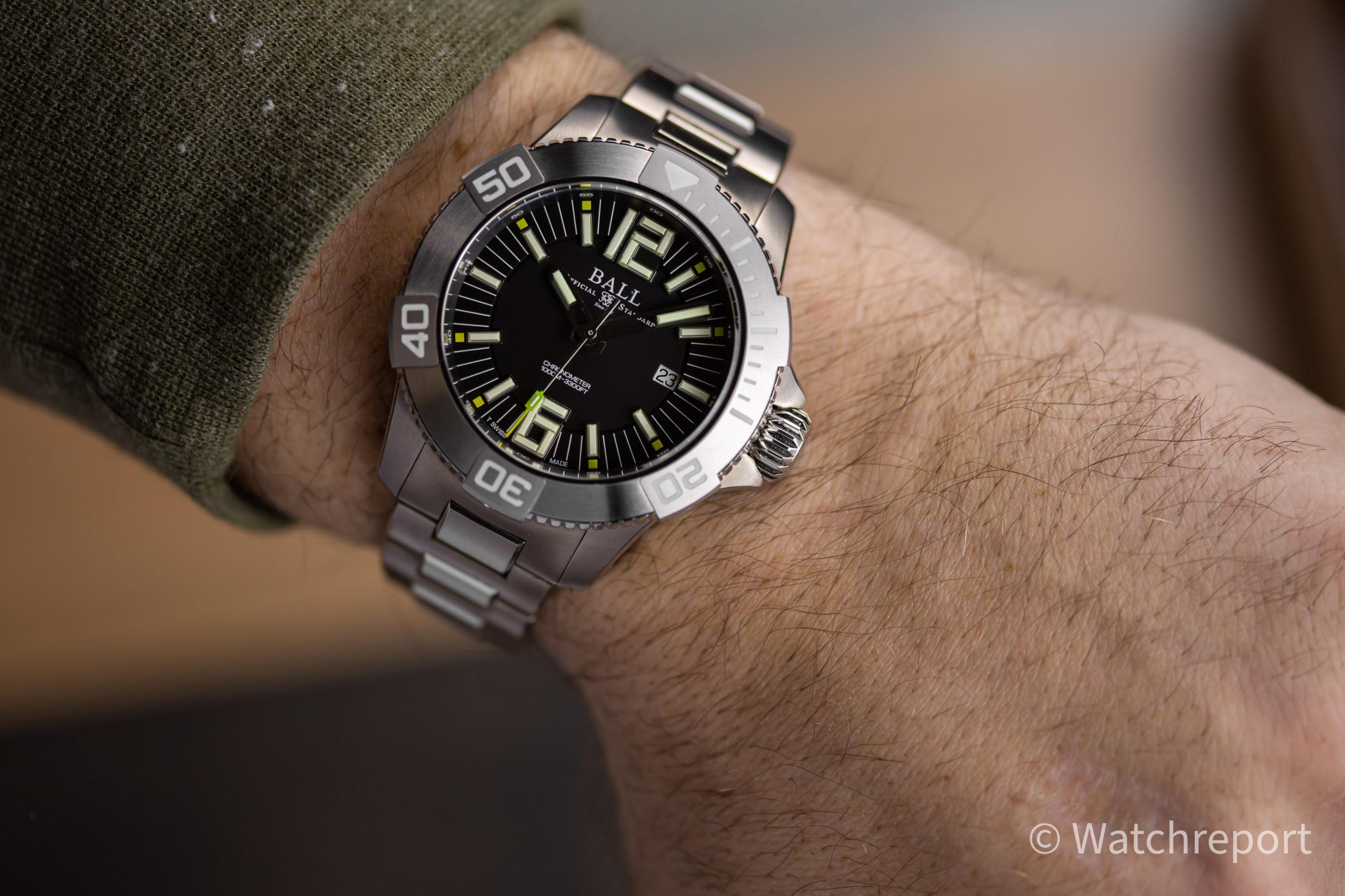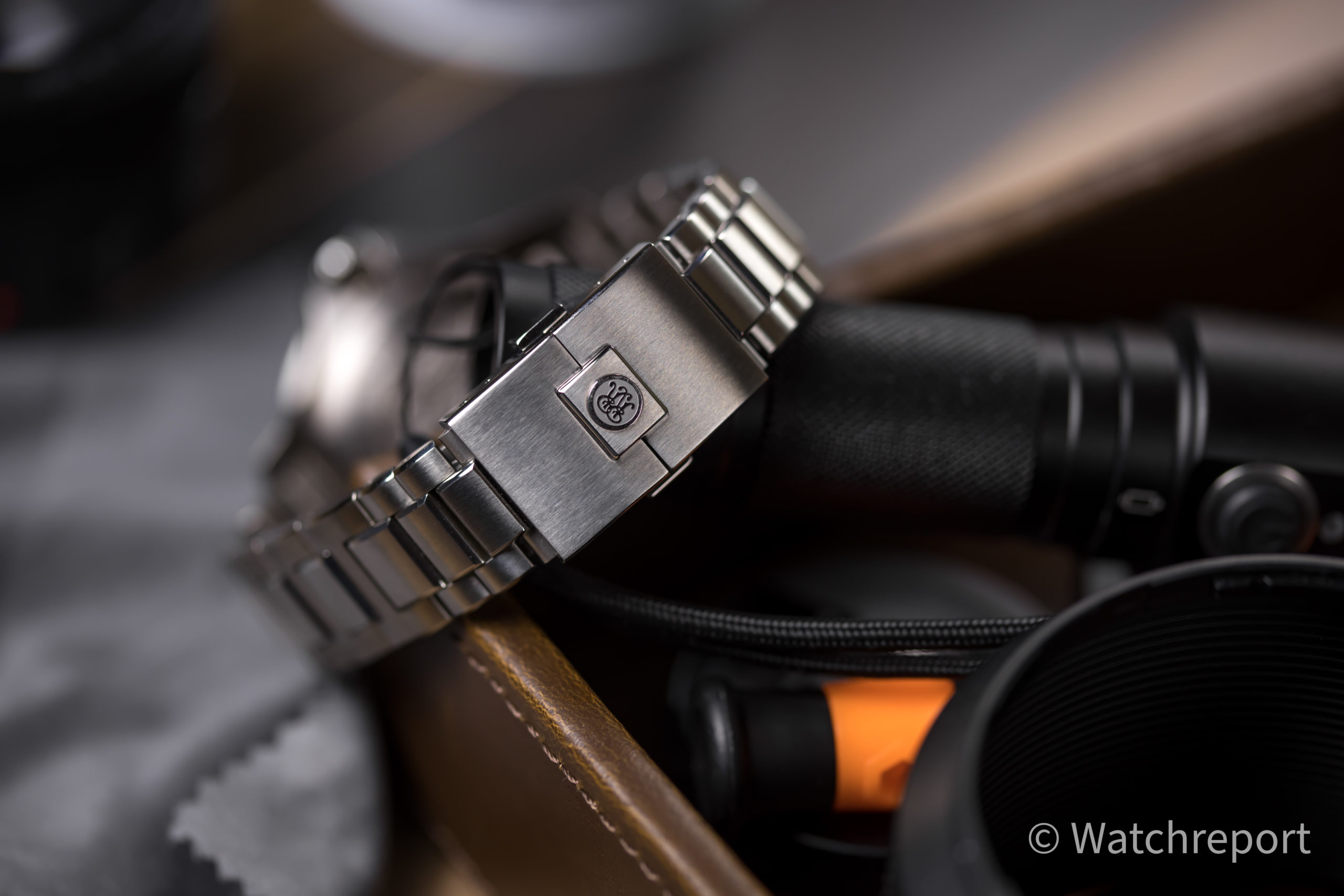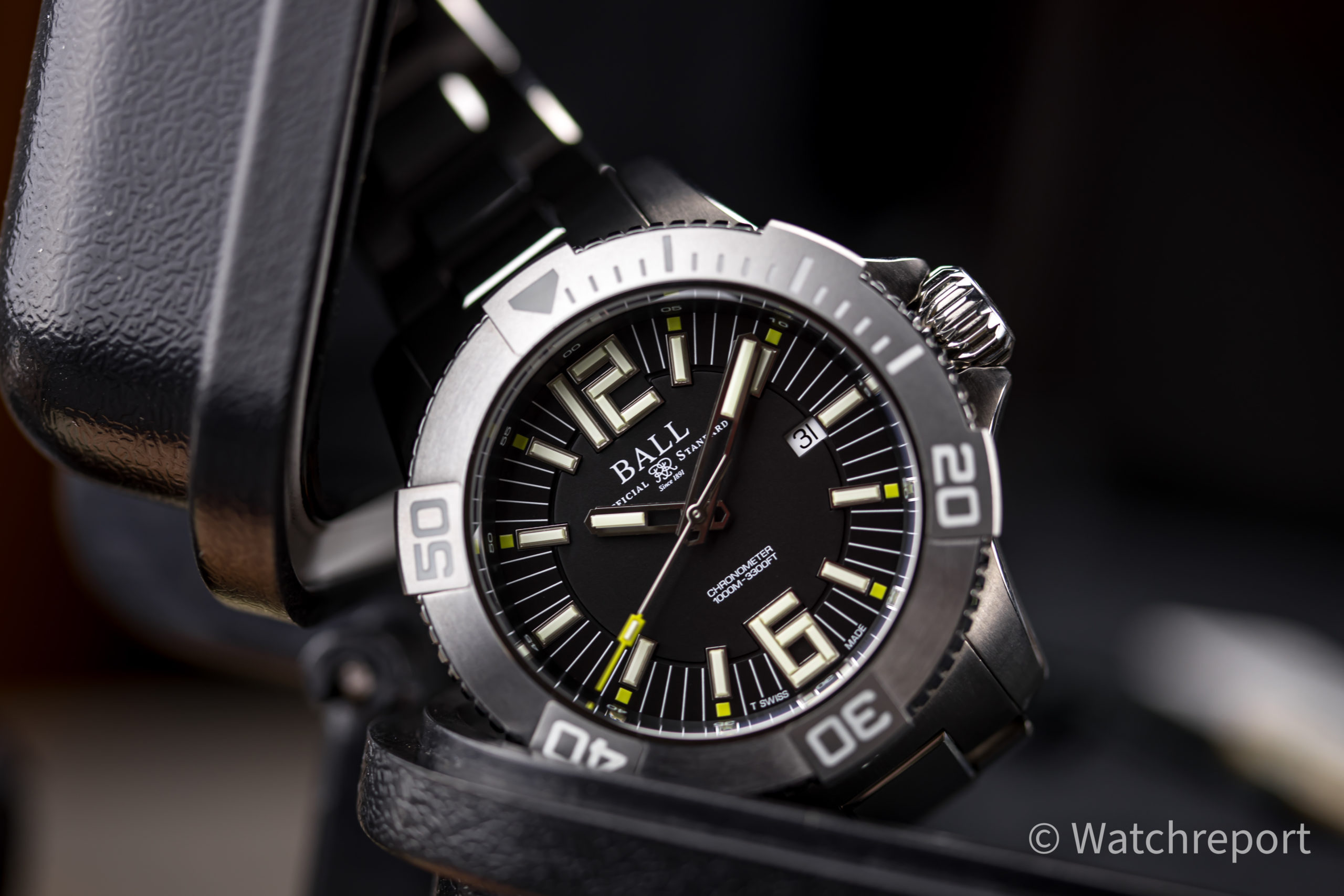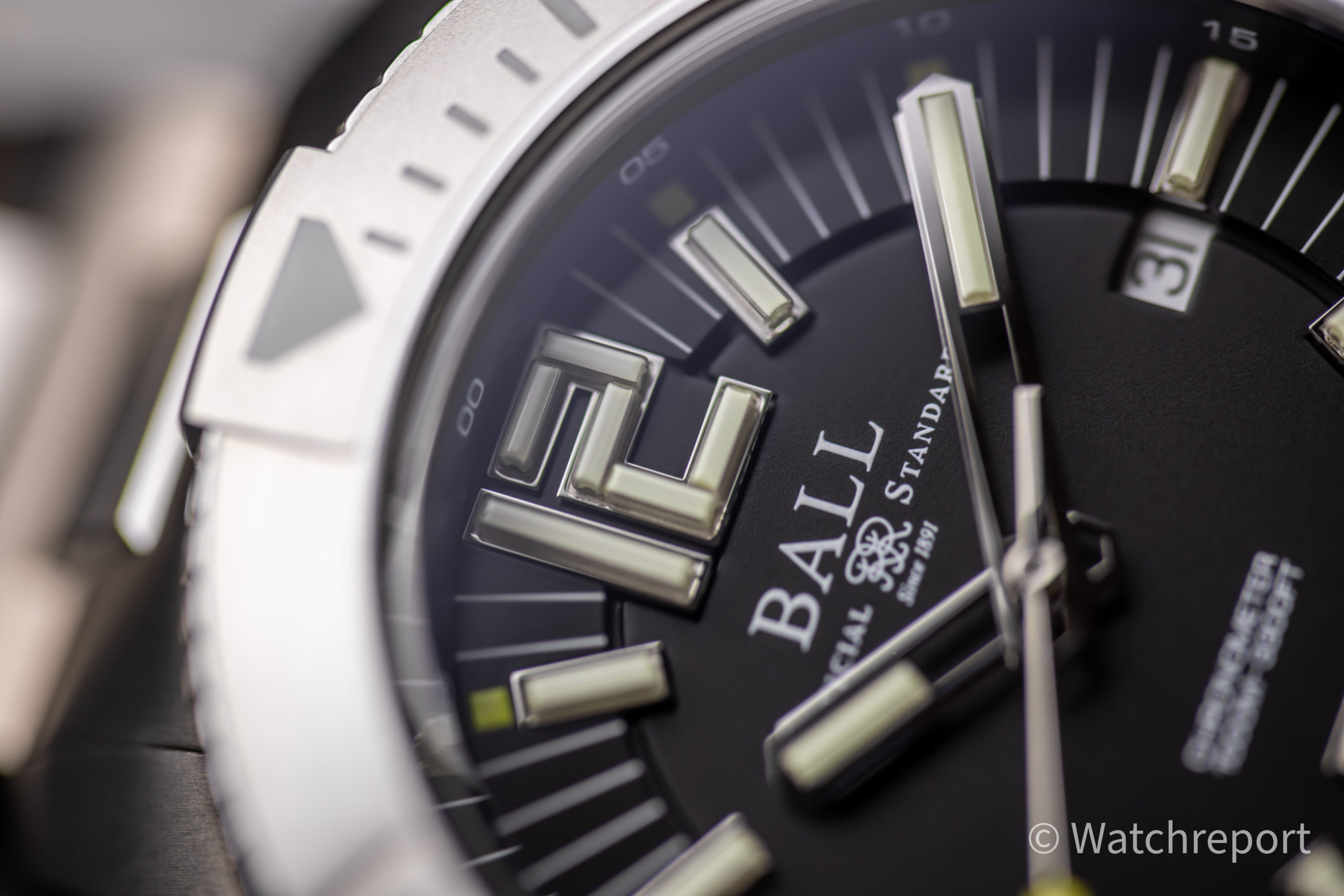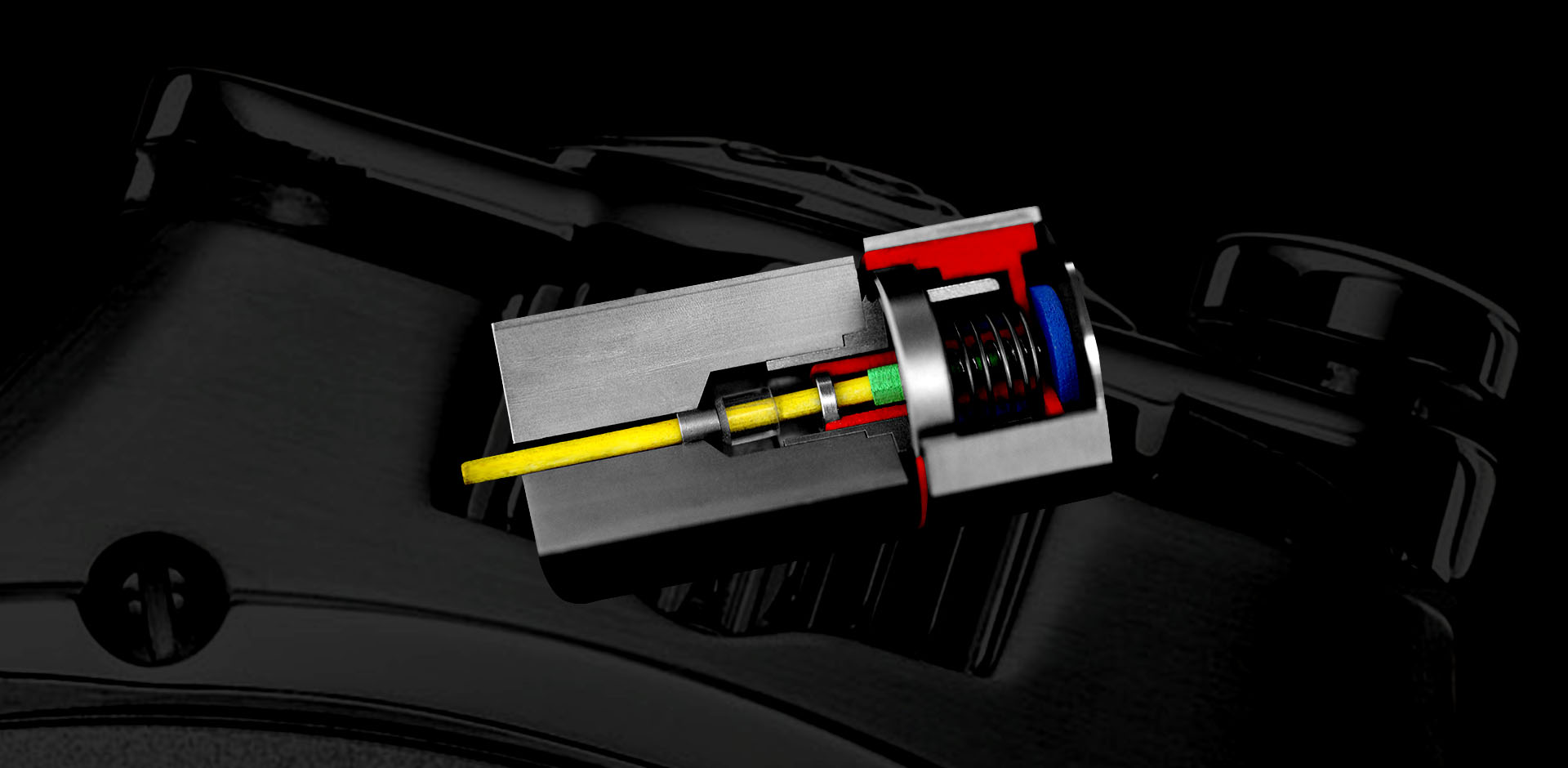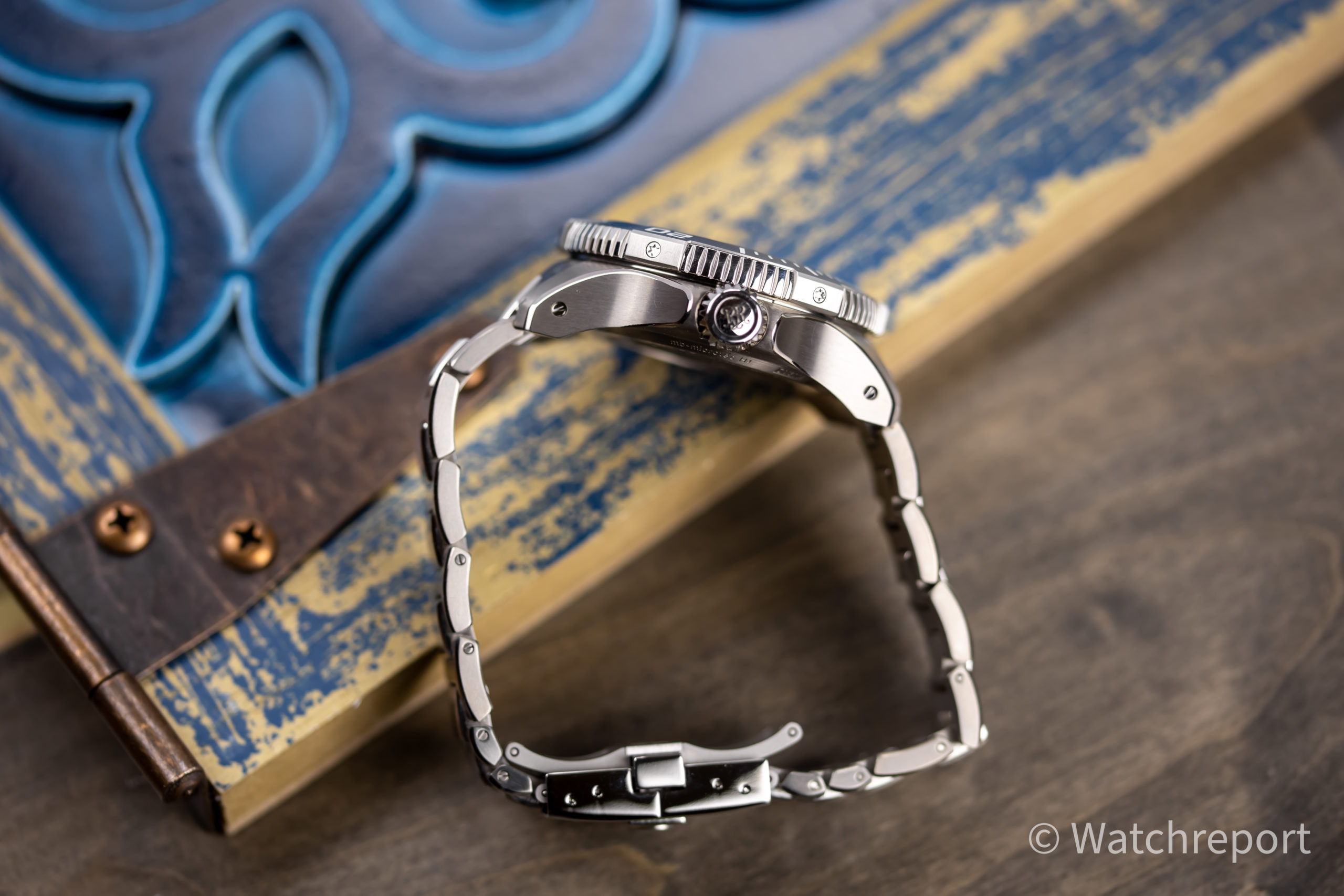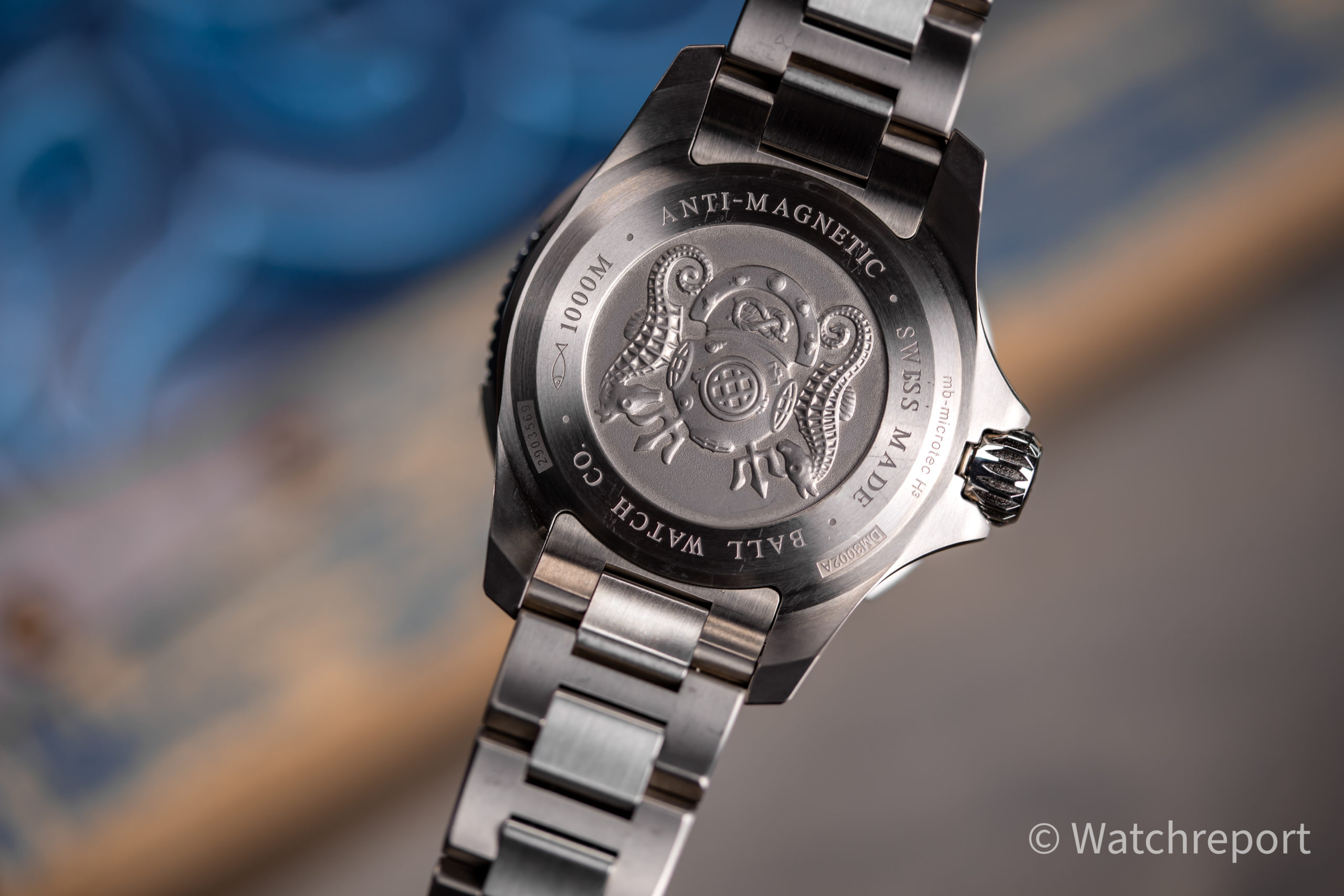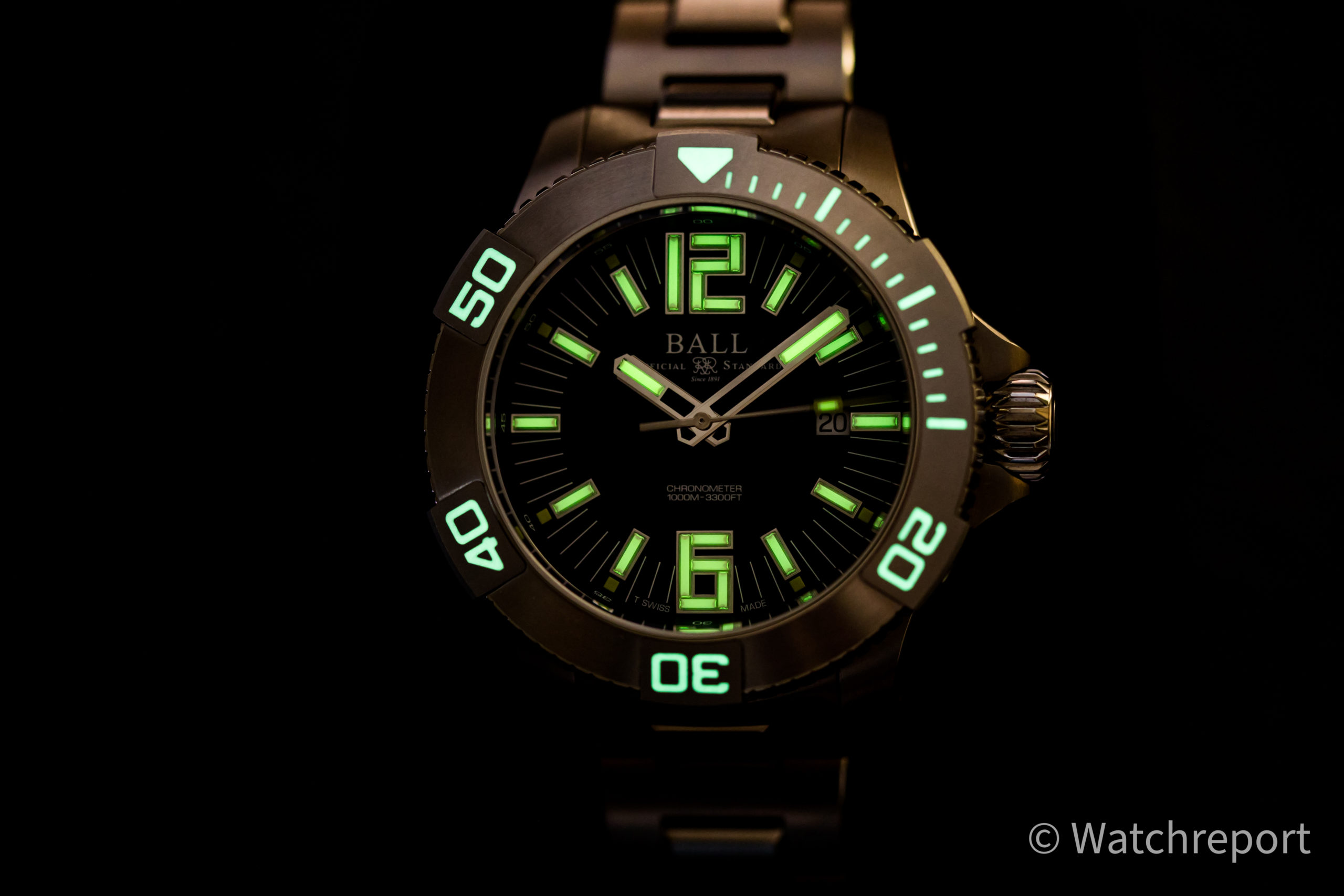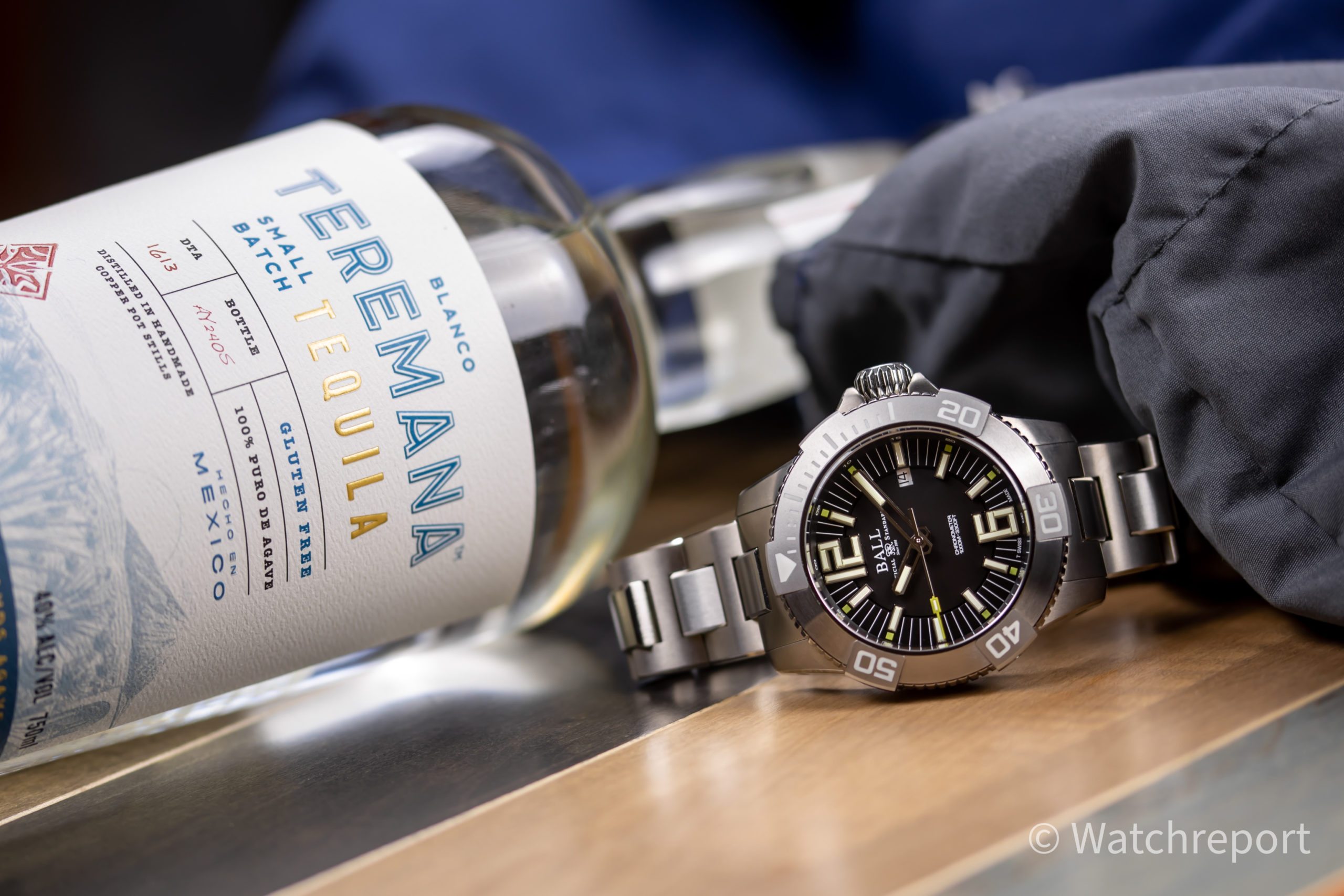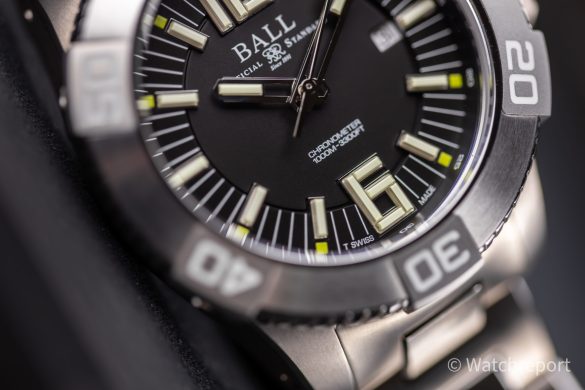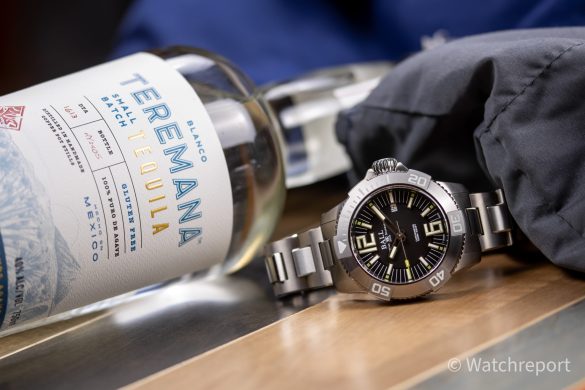Ball Engineer Hydrocarbon DeepQUEST II
The Ball Engineer Hydrocarbon Deepquest II is an update to a popular dive watch from the famed Swiss Brand. The original Deepquest was a great-looking watch but had a little too much of the DNA from the regular Hydrocarbon series. This second version updates this deep diver to not only stand out a little more but also includes some great updates such as the HRV in the crown (yes, in the crown!), a phenomenal bracelet and clasp, and Arabic numerals made out of tritium tubes. This watch is the epitome of an overbuilt dive watch, in every way, and that is much of the appeal. A solid block of titanium was used for the case, and the bracelet is made from titanium and stainless steel, giving it a little added weight. And did I mention that this piece is COSC certified? Yes, this is quite an impressive watch with a price tag of just under $4000.
Specifications:
-
Solid Titanium Case
-
42mm
-
53mm Lug to Lug
-
21mm Lug Width
-
15.5mm Thick
-
Titanium and Stainless Bracelet
-
Sapphire Crystal
-
Automatic caliber BALL RR1101-C
-
Patented Helium Release Valve
-
1000m Water Resistant
-
COSC Certified
Price $3,899 As shown
https://shop.ballwatch.ch/en/ball-watches/EH/DM3002A?model=DM3002A-S2C-BK
Reading the specifications above, you may be thinking this is one crazy dive watch! And you would be right. But, this is far from the craziest piece that Ball makes. Don’t believe me? Check out the Submarine Warfare as an example. I sometimes think Ball watches are overlooked for the dive watches they produce and the brand as a whole. I am not sure why. Maybe it is the use of tritium on every model, or just down to marketing, but Ball has a massive array of watches to fit every need, and they are using some of the best watch technology out there, that can easily compete with any of the other Swiss brands. This watch is truly a masterpiece in almost every way, and while this is a review and not an advertisement, I hope this review does help to shed some more light on the brand, as crazy as that might sound, as they have been producing watches since 1891!
So, let’s jump right into it. The case and bracelet of the DeepQuest is titanium, or I should say the case, crown and bezel are all titanium and the bracelet is a combination of titanium and steel. The steel is the center link of the H-link bracelet. The clasp is solid titanium as well. The dimensions of the case are a little weird, as it is listed as 42mm. I talk about this in the video, but to sum it up, this is more a 45mm watch, any way you slice it, or in this case measure it. The 42mm is measured from the underside, as the bezel overhangs the case by 3mm, and with the massive crown, this is a much bigger watch than I thought it would be. If you are one that likes a bigger watch, this is not an issue, but for those looking for something svelte, this is not in by any means. Even with all the titanium used, this piece still weighs in over 200 grams, so be prepared for a beast on the wrist.
The bracelet might be my favorite part of this diver overall, and with a watch such as this, it is hard to pick out a favorite. The H-link bracelet is not only attractive but always a comfortable design the way it drapes on the wrist. To aid in getting the perfect fit, Ball has added 4 half links and two micro-adjust holes on the clasp itself. The massive titanium clasp is not what one would expect from a dive watch though. This is a dual deployant system, that is not only extremely attractive but still very functional.
Built into the clasp on each side is a wetsuit extension, so if you are going to take this watch on a dive, you will be able to use the bracelet with no issue. Beyond all of that, the Ball Engineer Hydrocarbon Deepquest II has a bracelet that is not 5mm thick, making this watch hard to wear. It is a slimmer bracelet, but still perfectly weighted to balance out the hefty case. And for those with giant wrists who always have a hard time with bracelets and having enough links, fret not. This bracelet should easily fit up to a 9-inch wrist.
The dial is much improved over the original version. Not only did Ball make the Deepquest II dial slightly bigger, but they improved the readability and design as well. Now for those that have never had tritium tubes, they are essentially radioactive, which is why they are encapsulated on the dial. Tritium needs no light source to charge, and is fantastic in the dark, especially when you truly need to tell the time and not worry if your lume will work or not. That said, the plastic casing the lume sits in, especially when they are this large on the dial, is not the most attractive part of the watch. I mean, it’s plastic, and I can understand why it is offputting to some. Overall though, this dial is extremely easy to read, and if you need a watch for extreme conditions, this is what one would want.
Did I say extreme conditions? Yes, I did. This diver is not only rated to 1000m, but is also shock resistant to 7,500Gs, 4,800A/m, and has a helium release valve. Now, I will admit to ignorance here and didn’t even think of an HRV when discussing this watch to be sent for review. I do not think about helium release valves and they are frankly never something to consider a watch purchase for myself.
Then, I was reading up while doing research for this review, and when it mentioned the HRV, I went back and grabbed the watch and shook my head. I was like, where is it? Then I read it again and realized it was in the crown. IN THE CROWN. Not on the side of the case, not an extra crown like Omega uses, but an automatic helium release valve built into the crown of a watch. Below is a diagram of this patented feature, and some words from the Ball website, but I have to say, while the majority of us have no use for an HRV, the innovation here is truly awesome!
BALL Watch has been able to incorporate an automatic helium release valve directly into the crown to allow gases to escape as the watch resurfaces from the crushing pressure of the depths. This patented BALL innovation has eradicated a potential surface liable to warp under the effects of water pressure, thereby improving the timepiece’s water resistance even further.

